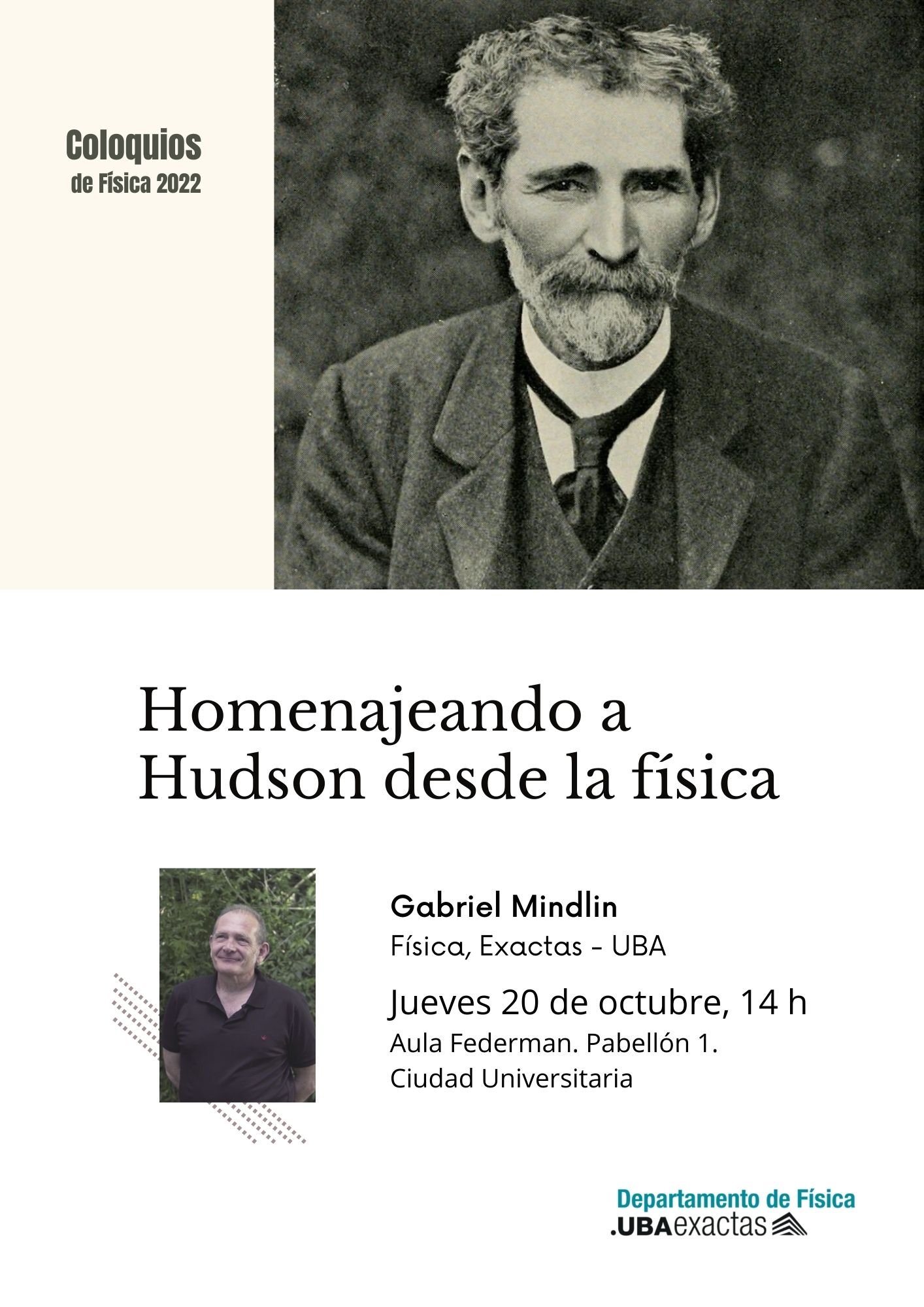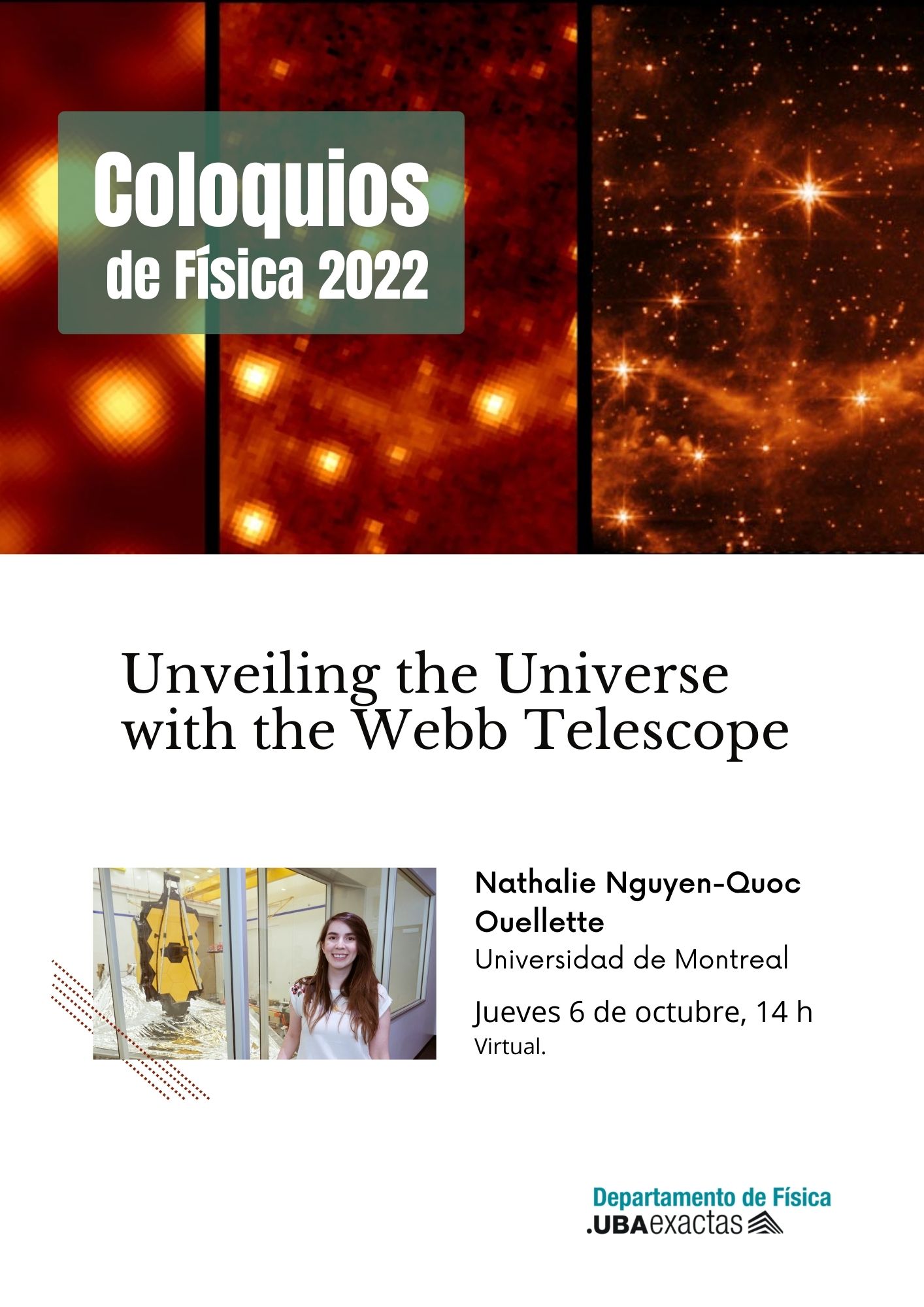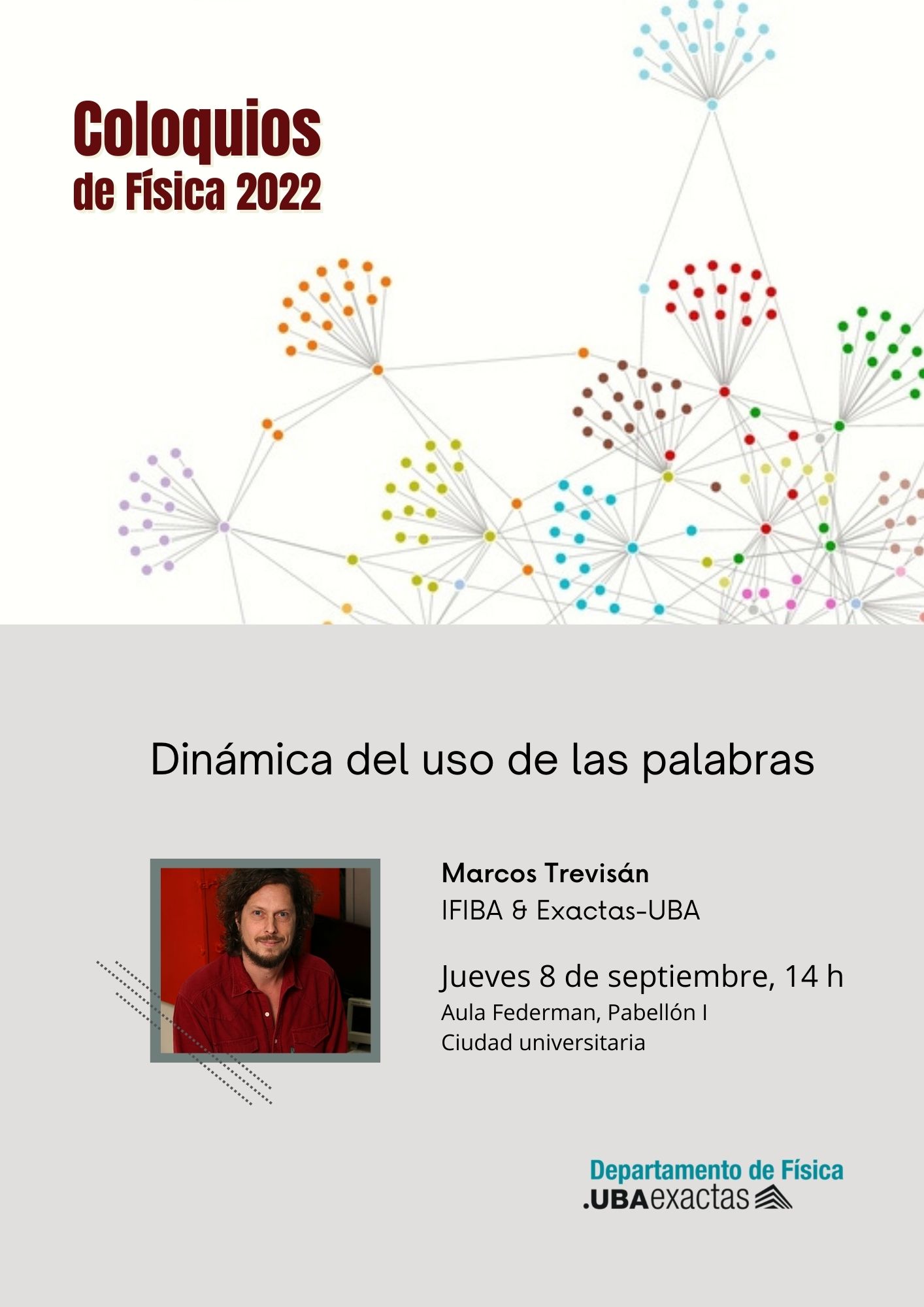Coloquio: Advanced microscopy techniques to enable the discovery of molecular mechanisms that regulate cell migration
- 12-06-2025 14:00 |
- Aula Federman

Gabriel Mindlin
Física, Exactas UBA. Conicet

Nathalie Nguyen-Quoc Ouellette - Universidad de Montreal
The James Webb Space Telescope (JWST), the successor of the famous Hubble Space Telescope, has finally launched and has started doing science! The Webb Telescope, a 6.5m infrared telescope, is without a doubt one of the most complex machines ever built by humanity and the largest telescope ever sent to space. Thanks to Webb, we now have the capacity to see farther than ever in our Universe, peer through the cosmic dust sprinkled throughout galaxies and discover and study new alien worlds. This project is an international collaboration between NASA, the European Space Agency and the Canadian Space Agency. In addition to contributing the FGS/NIRISS instrument, Canada and its astronomers are already some of the first to use the telescope and have already begun producing groundbreaking science thanks to its revolutionary data. As the first few images and bits of data start to trickle in, you will learn about some of Webb's very first exciting discoveries and what this mission means for the future of space astronomy.

Emiliano Cortes
Faculty of Physics, University of Munich (LMU), Germany
El desarrollo exitoso de la fotosíntesis artificial requiere encontrar nuevos materiales capaces de recolectar eficientemente la luz solar y catalizar reacciones de generación de hidrógeno y reducción de dióxido de carbono. Las nanopartículas plasmónicas o dieléctricas son potenciales candidatas para estas tareas, debido a su capacidad para confinar la energía solar en regiones moleculares. Mediante el empleo de materiales estructurados artificialmente (metamateriales), coloides plasmónicos híbridos, nano-resonadores dieléctricos o nanoantenas metálicas, mostraré algunos de nuestros esfuerzos más recientes para convertir energía solar en energía química controlando y optimizando las interacciones luz-materia [1-7].

Marcos Trevisán
IFIBA & Exactas-UBA
La frecuencia con que se utilizan las palabras presenta oscilaciones regulares de 16 años. Proponemos que estas oscilaciones surgen de un mecanismo cognitivo básico común a otros objetos culturales con ciclos de vida, como la moda. Las palabras que pertenecen a un tema de interés aumentan su frecuencia, que luego se inhibe por saturación hasta recuperar el interés. Presentamos un modelo de baja dimensión para la interacción de este mecanismo cognitivo y el contexto sociocultural, que explica las frecuencias de aparición de miles de palabras en diferentes idiomas durante los últimos tres siglos. Mostramos que las oscilaciones están sintonizadas a una bifurcación de Hopf del sistema y están parcialmente sincronizadas.

Juan Calderón Bustillo
IGFAE
Gravitational waves provide us with an unique opportunity to observe ultra compact objects, such as black-holes, in a highly dynamical state, as pairs of these form and merge. This allows us to study the dynamics of space-time in the strong gravity regime and, in particular, search for subtle signatures of, nowadays theoretical, exotic objects known as black-hole mimickers. Among these, so-called boson stars are especially appealing due their simplicity and the fact that the particles building them up, known as ultralight bosons, are widely considered strong candidates to form (part of) what we know as Dark Matter. In this seminar I will describe ongoing efforts to produce catalogs of numerically simulated gravitational-wave signals from boson-star mergers that can be compared to existing LIGO-Virgo data in order to look for such objects, together with the corresponding data analysis techniques. In particular, I will focus on the qualitative discussion of the phenomenology of boson-star mergers, on the analysis of several LIGO-Virgo signals under this exotic hypothesis vs. the canonical black-hole merger one and on the estimation of the putative boson-star parameters, particularly focusing on the mass of the underlying bosonic particle.